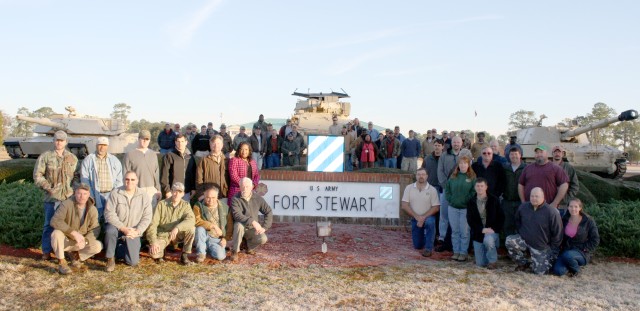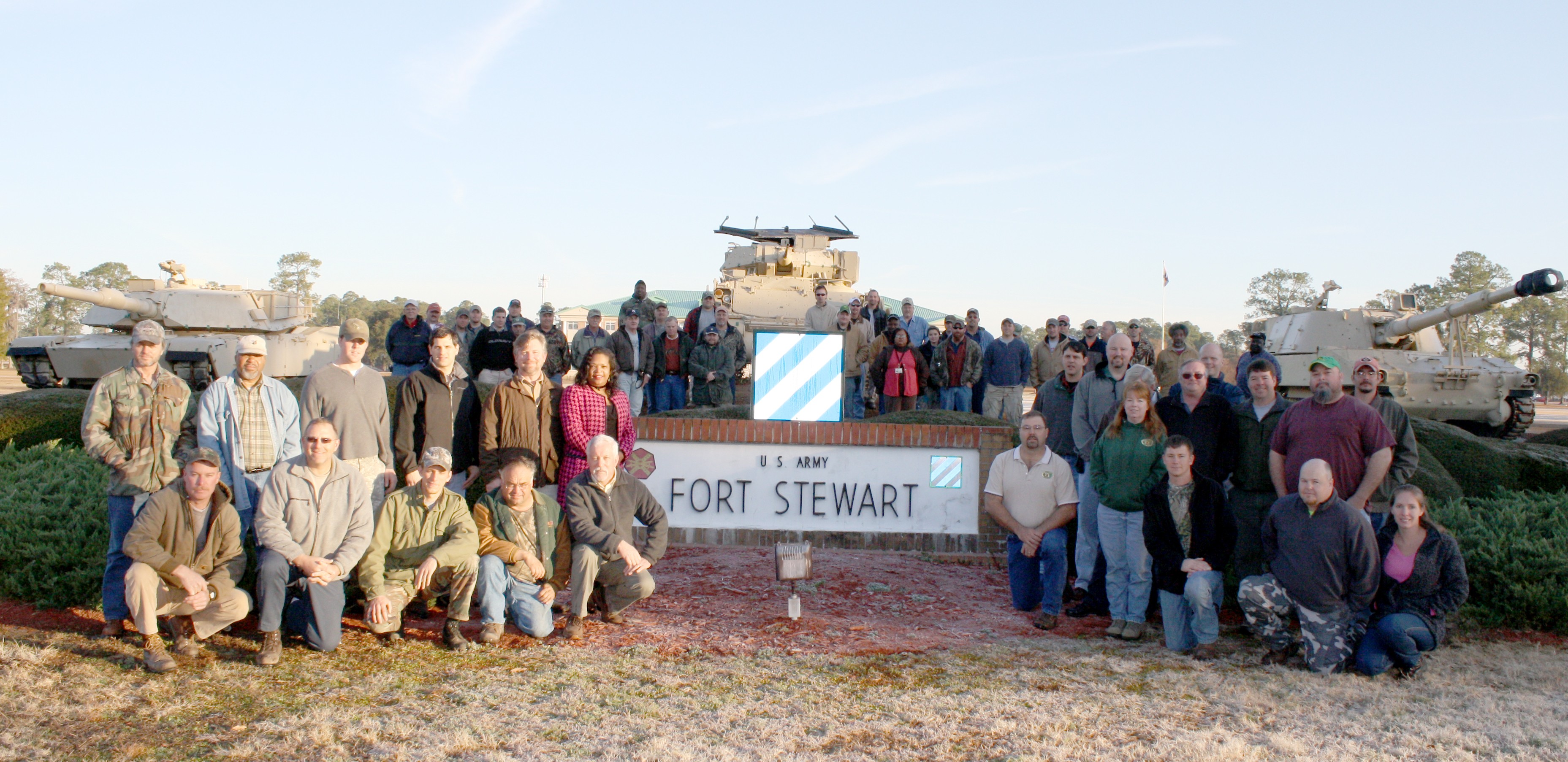
FORT STEWART, Ga. -Receiving Army-wide recognition is nothing new to Fort Stewart and Hunter Army Airfield. Last year, the installation was honored with its fourth Army Community of Excellence award. Recently, the Environmental Division of the Directorate of Public Works was informed by the U.S. Fish and Wildlife Service that it had won the 2009 Military Installation Conservation Partner Award.
Although the award recognizes the successes of the Environmental Division's Fish and Wildlife branch, Tim Beaty, Fish and Wildlife branch supervisor, said the award is the result of a team effort.
"This is a success the team has received," said Beaty, who has worked with DPW since 1977. "We worked hand-in-hand with the Forestry branch and the Prevention and Compliance branch. This is everybody's award."
Among the kudos for which his division is recognized is its success in the recovery of the red-cockaded woodpecker, eastern indigo snake, flat woods salamander, wood stork and Shortnose sturgeon.
"We've been able to double the size of the red-cockaded woodpecker population here since 1994," Beaty said. "In fact, we've given over 200 juvenile pairs to other installations. That's been a very successful program."
Beaty, who holds degrees in wildlife technology and biology from Georgia Southern, explained that every military installation since the 1950s has had to develop and improve an Integrated Natural Resource Management Plan through the National Sikes Act. He said that wildlife biologists working on installations began to realize the red-cockaded woodpecker were attracted to old growth pine forests without a lot of undergrowth, the same areas the Army used to training. Working with the forestry branch then, Fort Stewart and other installation began to replicate these conditions throughout its installations, which attracted more breeding pairs of red-cockaded woodpeckers.
Another strategy wildlife biologists developed was to cut holes into the tree trunk as ready-made homes for breeding pairs of red-cockaded woodpeckers. These artificial nesting sites, plus protection as endangered species have helped to increase the bird's population on Stewart-Hunter, enough to where the installation can now capture young birds and ship them to other installations as breeding pairs. The Environmental Division's success is not limited to recovering endangered species. Stewart-Hunter is also credited with improving longleaf pine ecosystems and wetlands.
Beaty added that without the cooperation and assistance of the Directorate of Emergency Services, Directorate of Plans, Training, Mobilization and Security and the Directorate of Family and Morale, Welfare and Recreation, the Environmental Division could not have won this prestigious award, which is one of two awards the division has won.
The Prevention and Compliance branch recently won the Secretary of the Army's 2009 Environmental Quality Award and will now compete for the Department of Defense level award.

Social Sharing